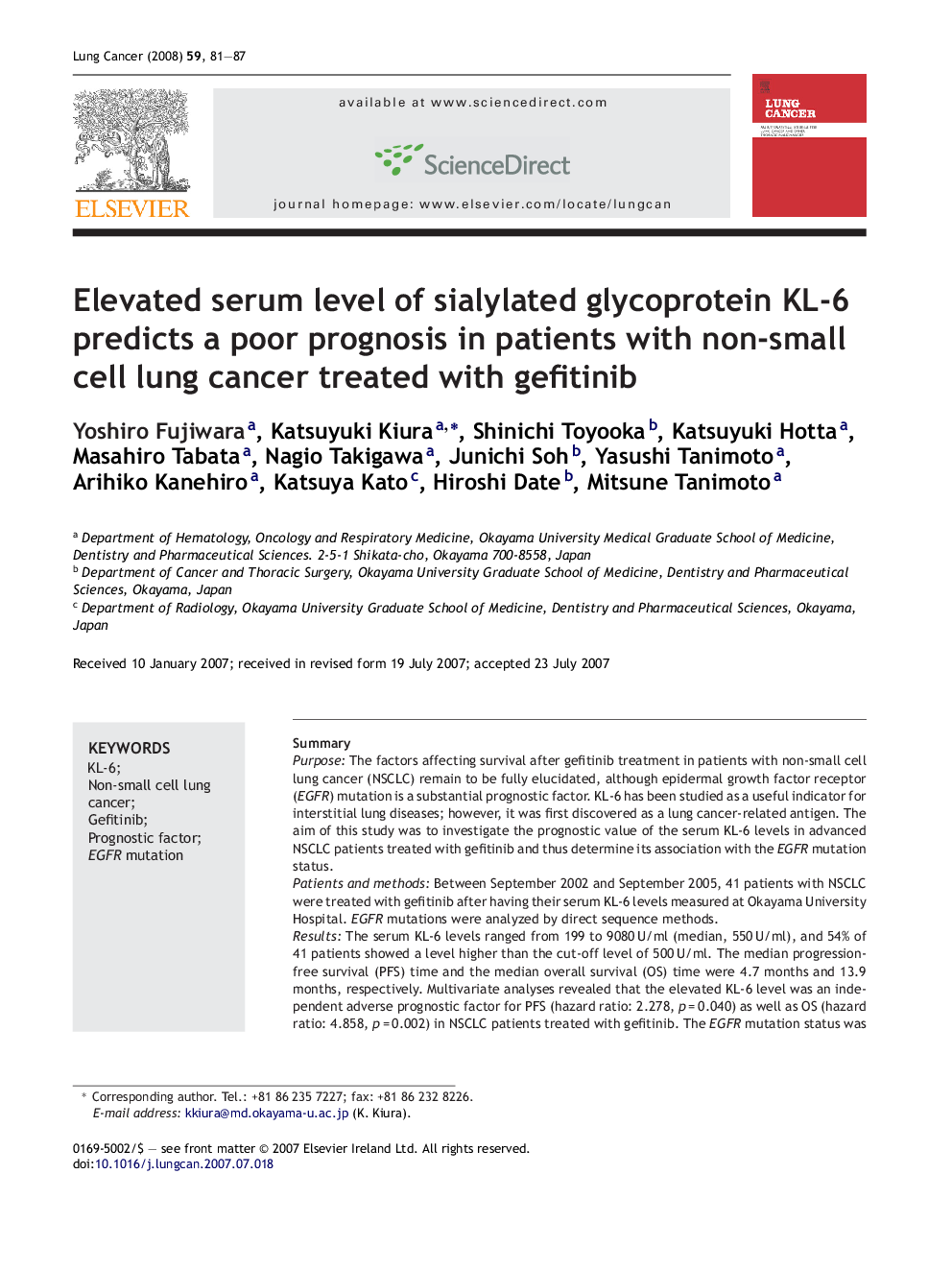| Article ID | Journal | Published Year | Pages | File Type |
|---|---|---|---|---|
| 2143572 | Lung Cancer | 2008 | 7 Pages |
SummaryPurposeThe factors affecting survival after gefitinib treatment in patients with non-small cell lung cancer (NSCLC) remain to be fully elucidated, although epidermal growth factor receptor (EGFR) mutation is a substantial prognostic factor. KL-6 has been studied as a useful indicator for interstitial lung diseases; however, it was first discovered as a lung cancer-related antigen. The aim of this study was to investigate the prognostic value of the serum KL-6 levels in advanced NSCLC patients treated with gefitinib and thus determine its association with the EGFR mutation status.Patients and methodsBetween September 2002 and September 2005, 41 patients with NSCLC were treated with gefitinib after having their serum KL-6 levels measured at Okayama University Hospital. EGFR mutations were analyzed by direct sequence methods.ResultsThe serum KL-6 levels ranged from 199 to 9080 U/ml (median, 550 U/ml), and 54% of 41 patients showed a level higher than the cut-off level of 500 U/ml. The median progression-free survival (PFS) time and the median overall survival (OS) time were 4.7 months and 13.9 months, respectively. Multivariate analyses revealed that the elevated KL-6 level was an independent adverse prognostic factor for PFS (hazard ratio: 2.278, p = 0.040) as well as OS (hazard ratio: 4.858, p = 0.002) in NSCLC patients treated with gefitinib. The EGFR mutation status was analyzed in 22 patients (54%). Among those with wild-type EGFR, the patients with high serum KL-6 levels also had a worse survival than those within normal serum KL-6 levels (6.5 months versus 13.3 months, p = 0.0194).ConclusionOur data suggest that NSCLC patients with high serum KL-6 levels tended to have a poor clinical outcome when treated with gefitinib.
